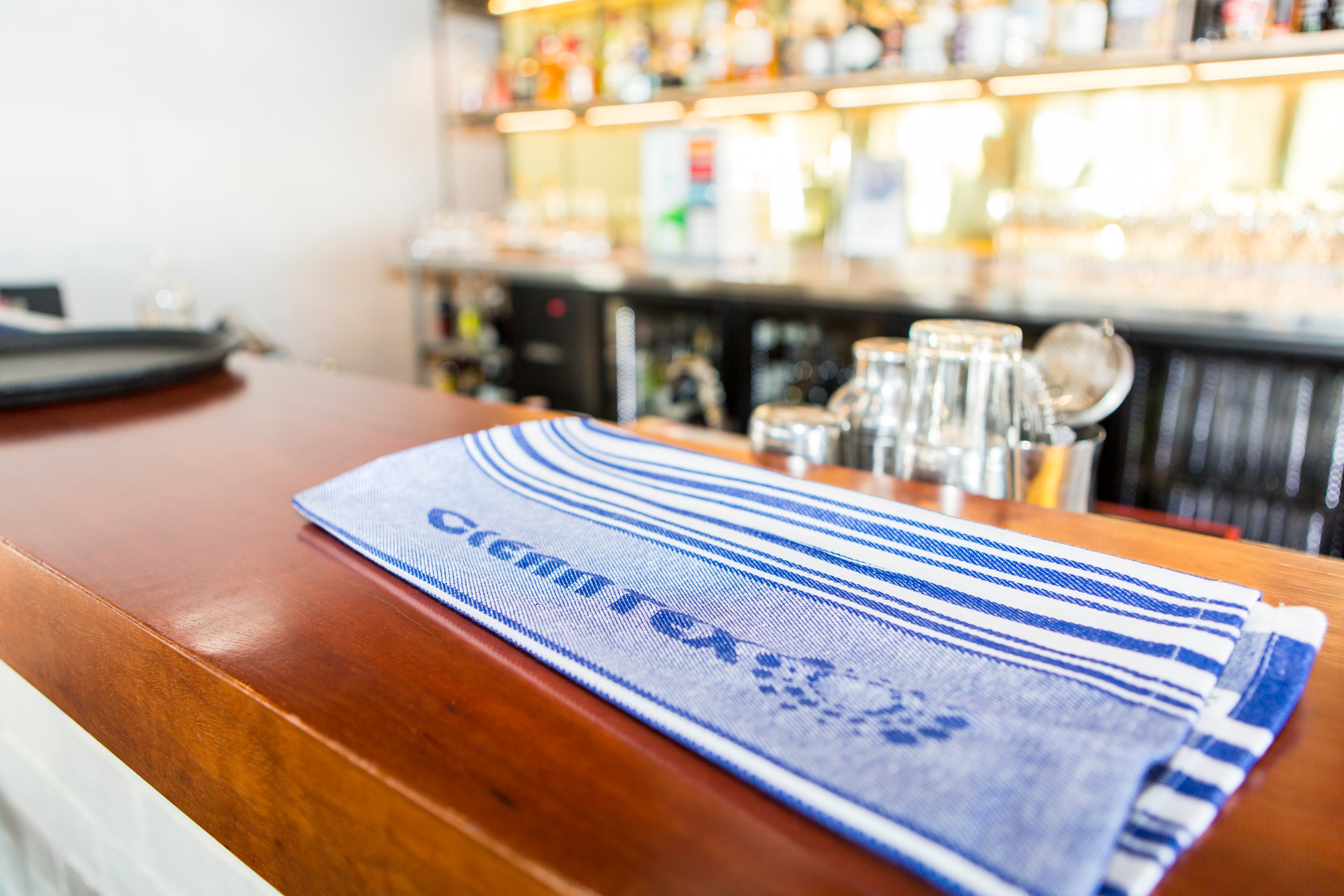Whether cooking in a domestic kitchen or in commercial operation with more activity, the kitchen towel is fundamentally utilitarian. As such, both the homemaker and the professional chef find the need for a thirsty, lint-free workhorse of a towel a premium in a fast-paced kitchen.
Whether it doubles as a handy potholder; gets inserted into a basket as a bread warmer; is efficiently tied around the waist as an apron or parked on the shoulder so as never to be apart from its master; or is easily at hand to wipe up spills or wipe down utensils, dishes or work areas, there is only one towel that serves all of these plus many other purposes: The Tea Towel.
What Distinguishes the Tea Towel?
These days, there are many towels on the market. The common heading for this collective is the kitchen towel, but there is a different one needs to be aware of. The tea towel is typically linen, or weave, or cotton, in the modern era.
It is a durable towel of quality construction made to last and able to quickly absorb liquids. What it is not is terry cloth, often referred to as a kitchen towel, but more appropriately, the hand towel. You won’t see the hand towel wasting time in a busy kitchen. When you pull down those fine glasses and china ready to serve, you want the towel that will wipe them clean without leaving any lint or marks. You want the tea towel.
The History of the Tea Towel
The towel has been as much a sidekick throughout history as the knife. Tracing its presence and use through time reveals an illustrious past. In ancient China as well as during World War II, silks were the handy towels used as cloth maps that could be surreptitiously hidden in a shoe or sewn into a garment to avoid detection in the event there was a search of prisoners.
If you have looked upon your tea towels as a kind of blank canvas, then you are in fine company. Vincent Van Gogh often used the tea towel as a substitute upon which to create his masterpieces when he had run out of canvas materials. In fact, one of Van Gogh’s works of art fetched a hefty sum at auction as recently as 2000. It was a still life with flowers – painted on a tea towel.
How the Tea Towel Got its Name
The tea towel, by any other name, is still a tea towel, and it derives its name from Victorian Era England where the tradition of serving tea in the social setting took off. Teatime went from the simple service of tea and perhaps biscuits to eventually becoming the late afternoon/early evening High Tea, or supper time.
Queen Victoria’s reign beginning in the early 1800s was known for its hierarchical social order. Many changes were occurring at that time, not the least of which was the order of the manor house in England. Teatime is a tradition of utilizing the best tea service. The finest china not only required a towel of distinctive qualities to make the service presentable but also was most likely personally cared for by the lady of the house to avoid the possibility of any mishaps in handling such finery.
The Best Material for Tea Towels
The preferred Cleantex towels of choice was soft linen that was highly absorbent and lint-free. The ladies of the manors could trust these towels to thoroughly dry their delicate serving set without marring them thus preserving the moment of presentation at tea service.
It was a time of pomp and circumstance, and it deserved just the right touch. With such ritual ingrained in this hierarchical structure, it is no wonder that a dedicated towel was given to the entire ceremony from start to finish. The tea towel was present before, during and after the service.
Expanding beyond mere utility, the staff would exploit their stitchery talents and either hem the edges of the towels or adorn them with their crafty embroidery. This further distinguished the tea towel with classic characteristics that nicely enhanced the presentation.
Responsible for so many advances, this was an era that also saw the ascendancy of the novel, scientific progress, organized feminism, the arts and crafts movement and the permanent establishment of the tea towel.
No Less Industrious - Enter the Americans
Meanwhile, across the pond in America, producers and grocers were packaging their flour, sugar and various other foodstuffs in sackcloth rather than bulky wooden barrels. A clever marketing move, these tightly woven sacks provided a convenient means of advertising upon which could be printed slogans and company mottoes. Some were even embellished with embroidery.
Necessity being the mother of invention, thrifty homemakers wasted no time recycling these sacks and using them as dish towels. This started a cottage industry in the way women would expand their collections by trading with each other for the different artistic patterns.
This, in turn, influenced marketers to engage professional artists and local designers who were commissioned to create the most sought-after flour sacks on the market. Sellers were quick to pick up on how their choice of sackcloth could influence the sales of cornmeal, rice, sugar, seed or flour.
Such a collaborative endeavor does not take hold without making an impact. This one lasted from the 1800s through the mid-1920s, through the Great Depression of the 1930s, through the war years of the 1940s and would have kept on going except for the intervention of petroleum products leading to the invention of the plastic bag. However, what has remained is the flour sack towel, the most desirable kitchen or tea towels due to the properties of softness, absorbency, and lint-free quality.
Our portfolio of commercial clients is spread across a number of industries including Mining, Oil and Gas, Health Care, Aged Care, Restaurants, Food Processors, Manufacturers and Retailers, Schools and Universities, Property Managers, Manufacturing, Distribution and Warehousing.
For more information regarding our linen rental service call Cleantex today on 9336 6944 or email admin@swsgroup.com.au for a representative to contact you.















